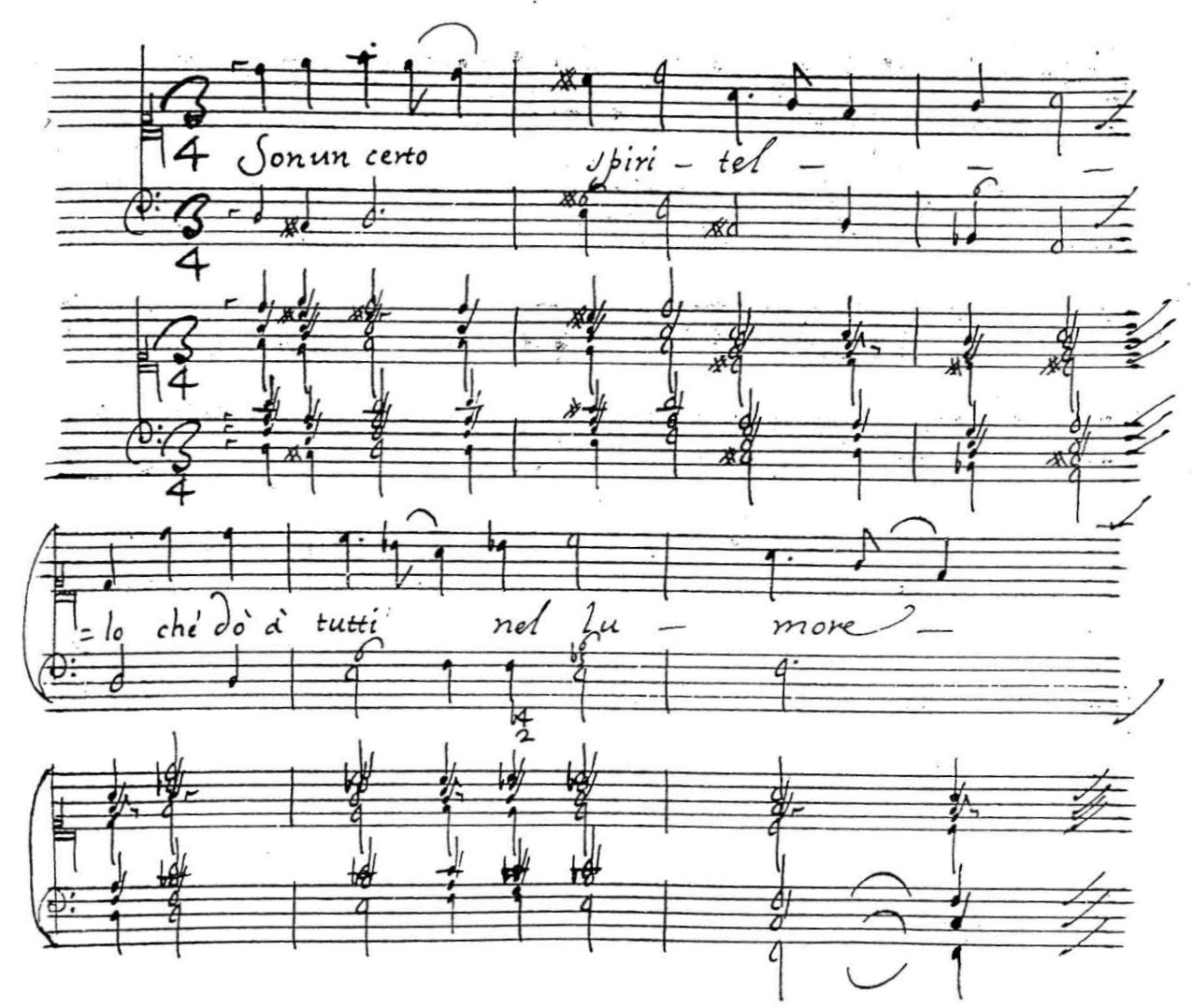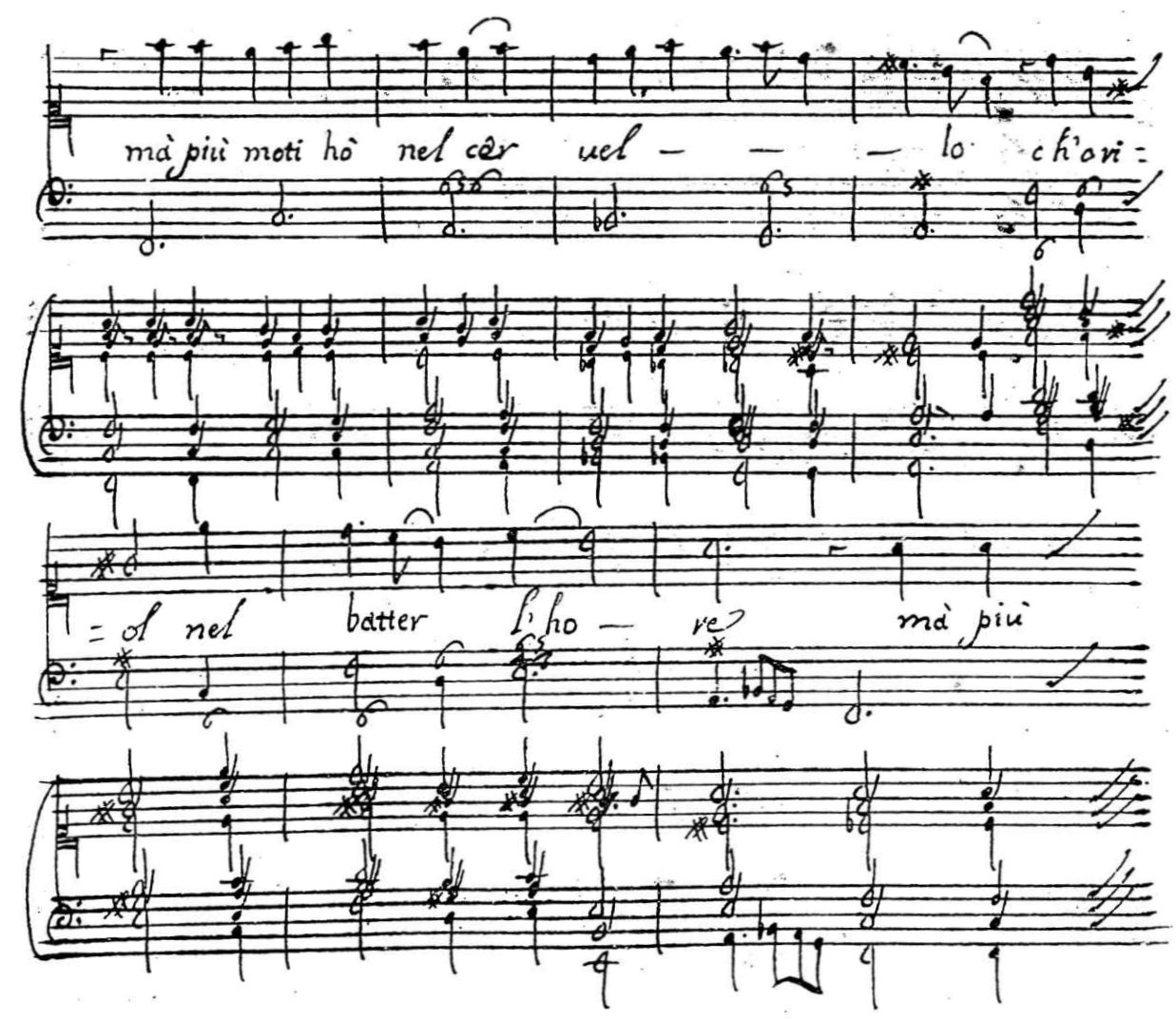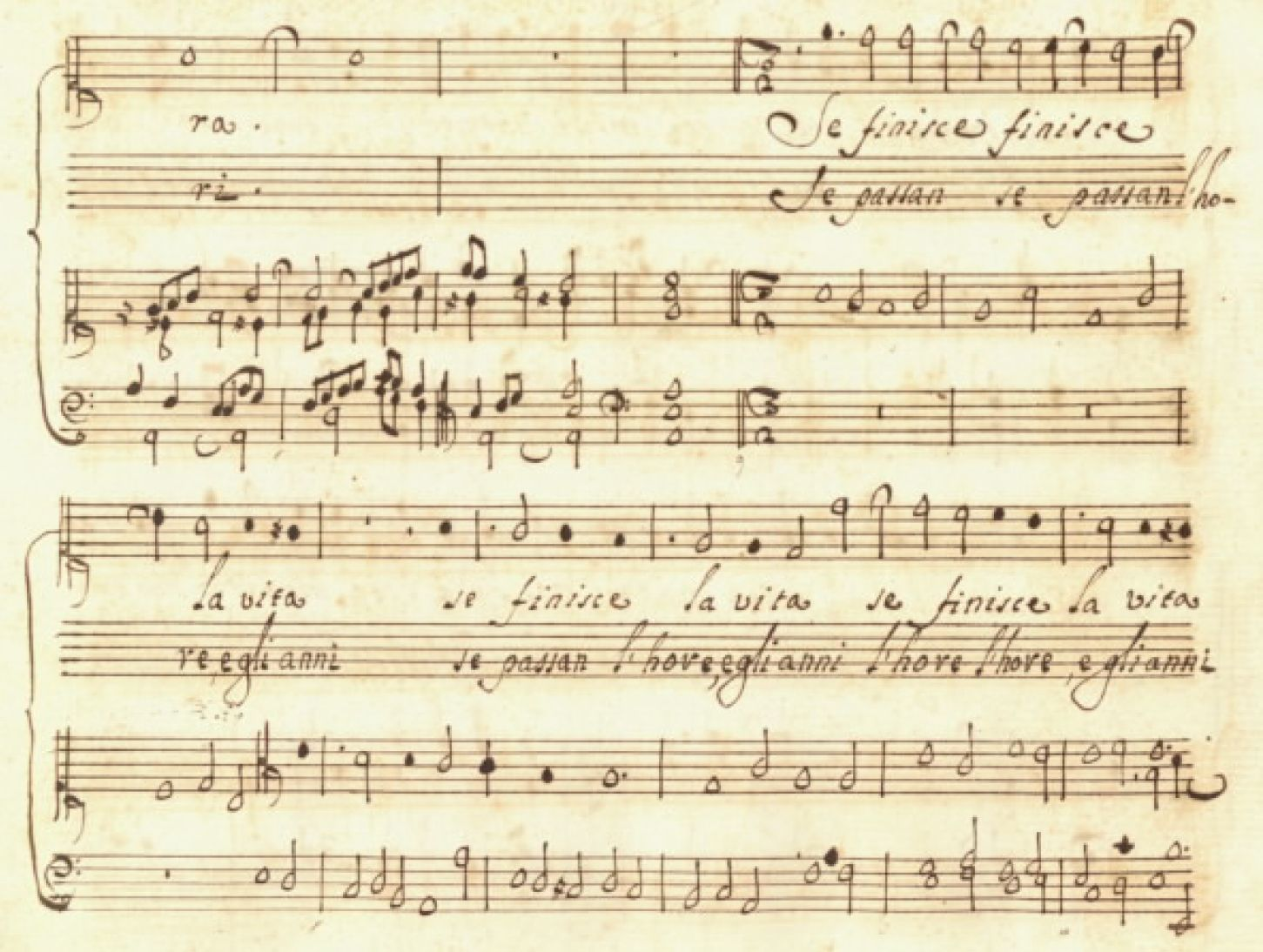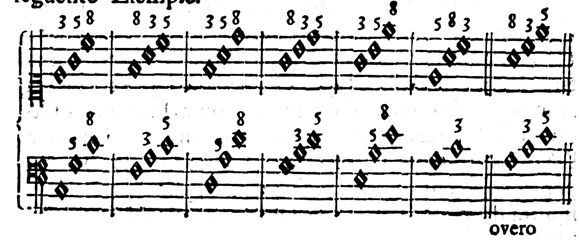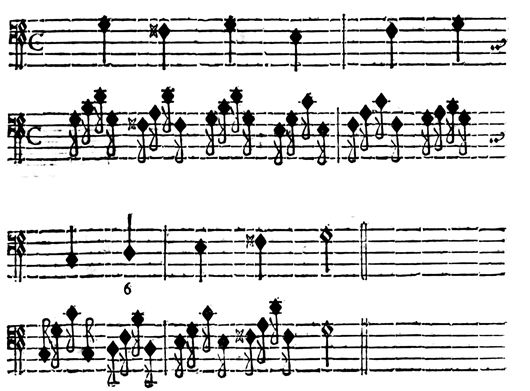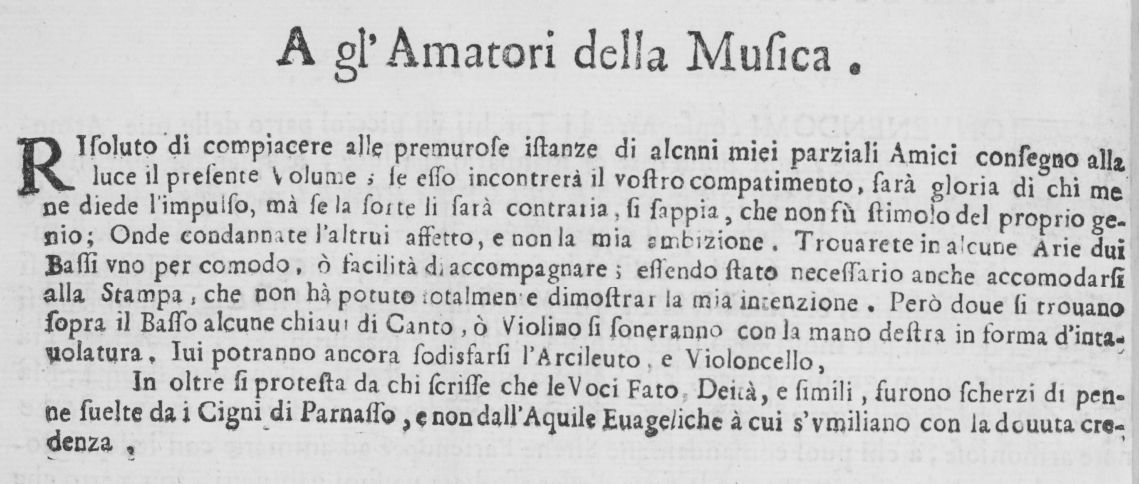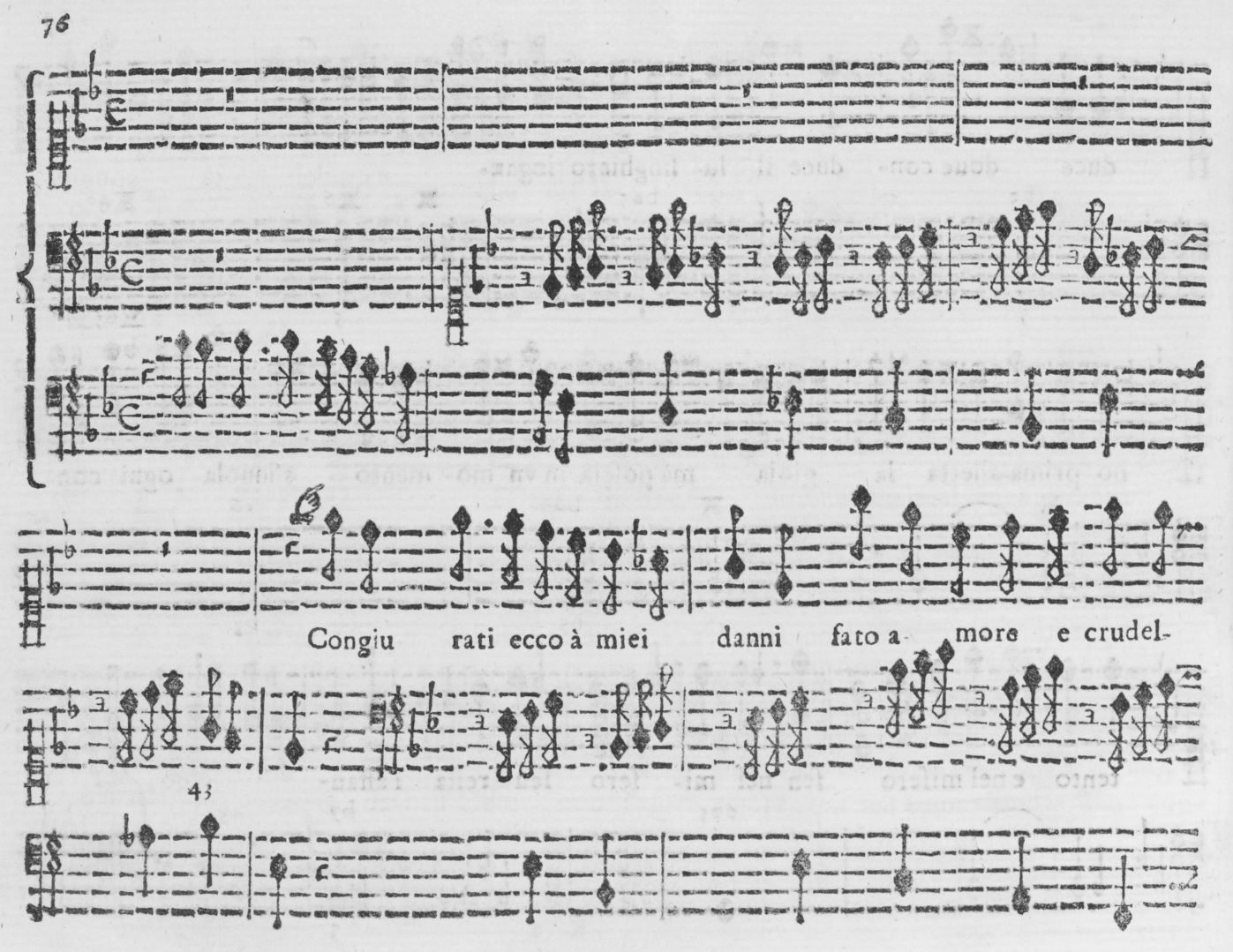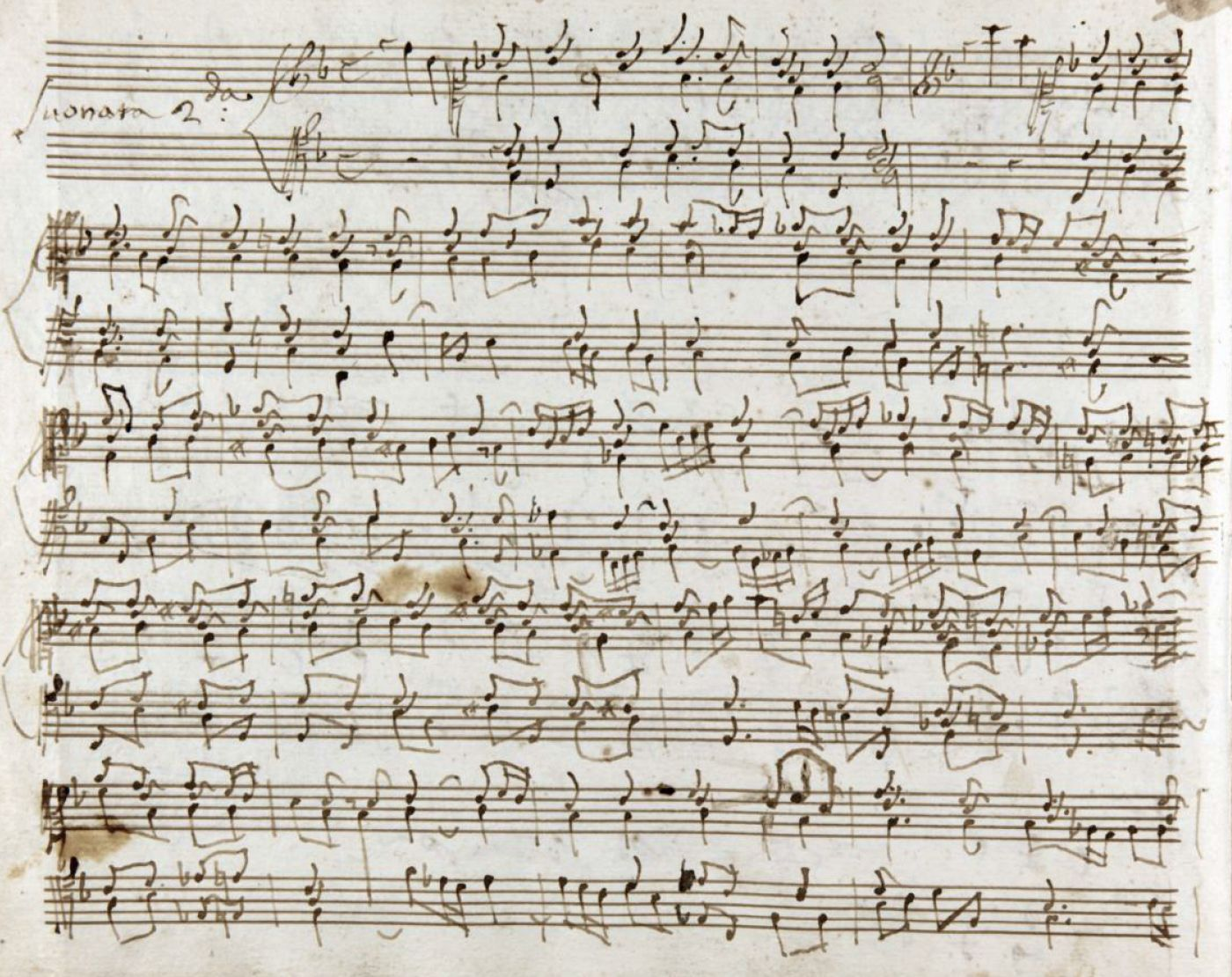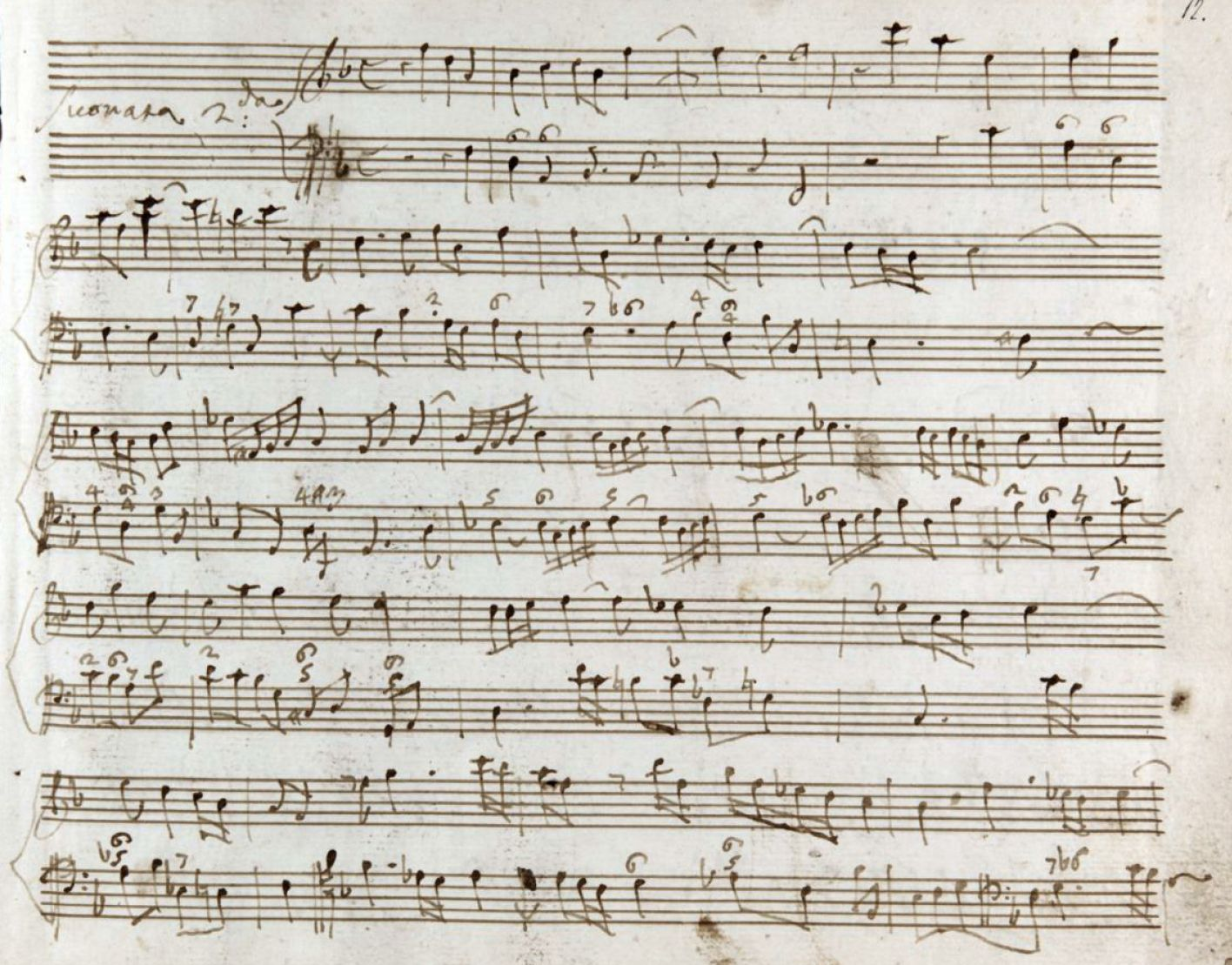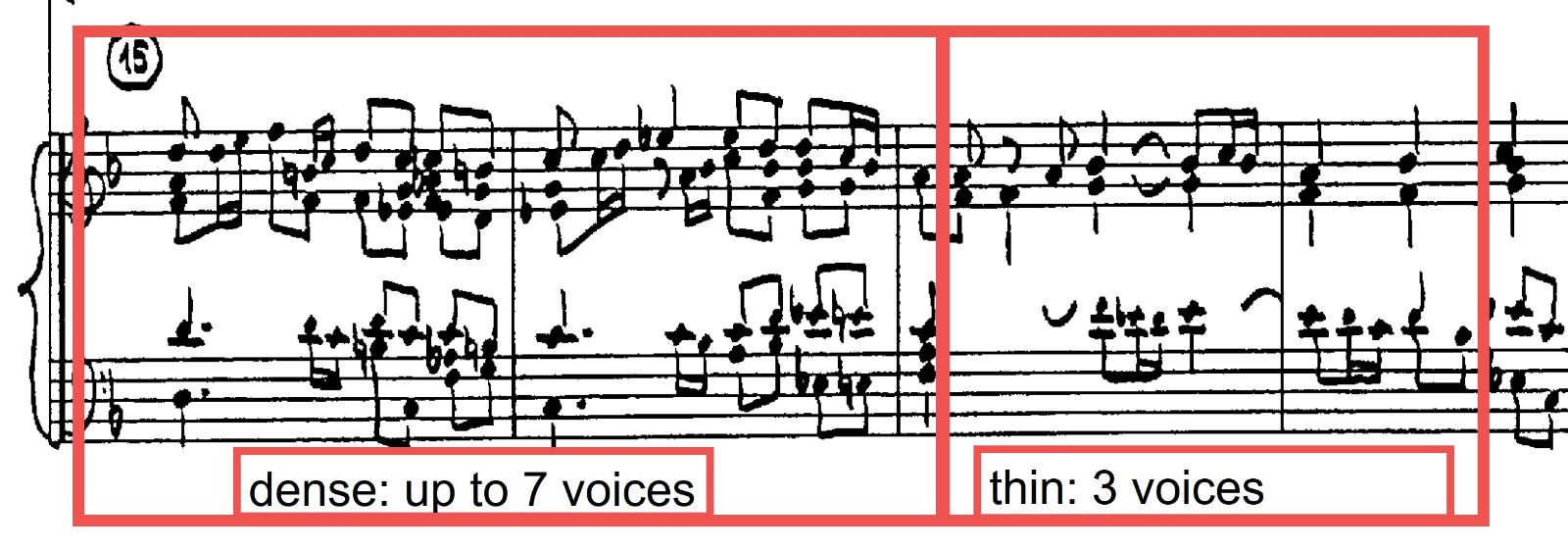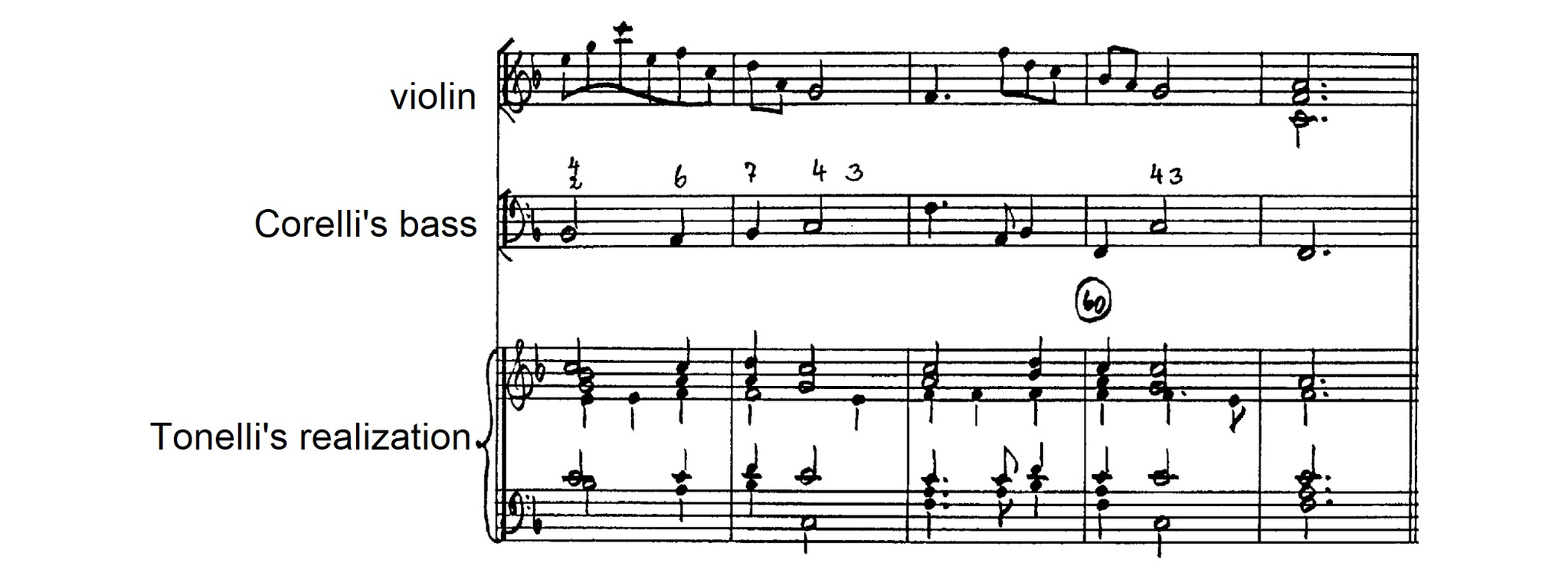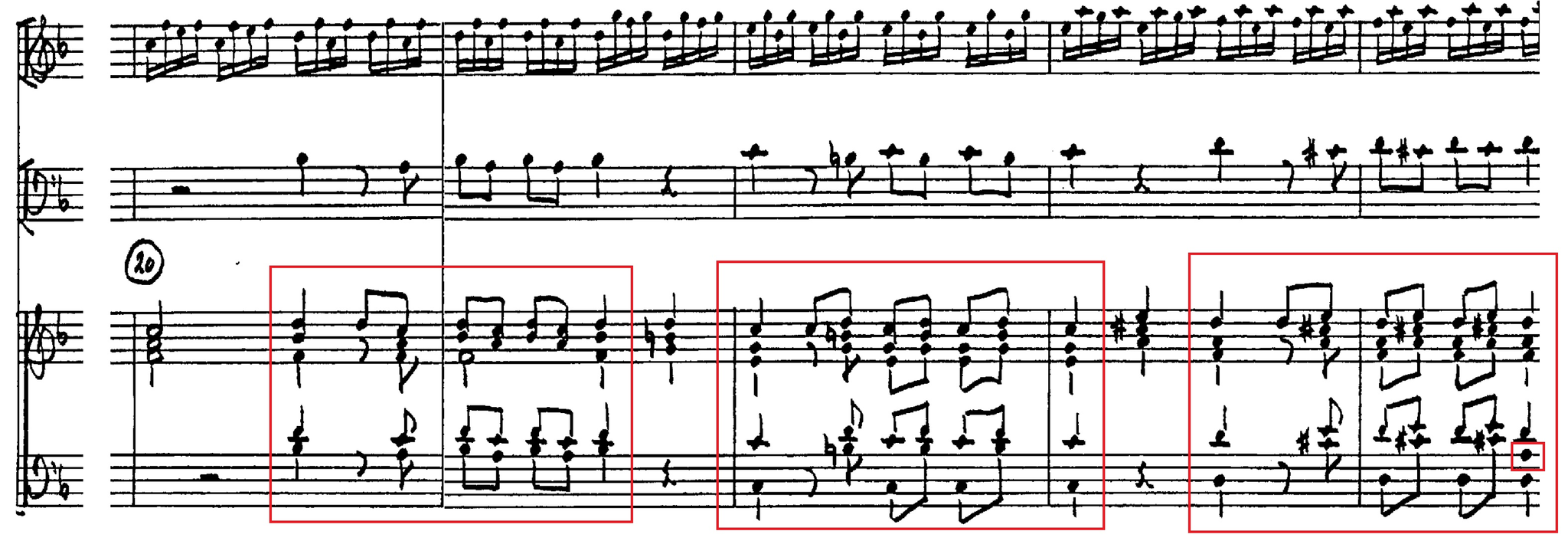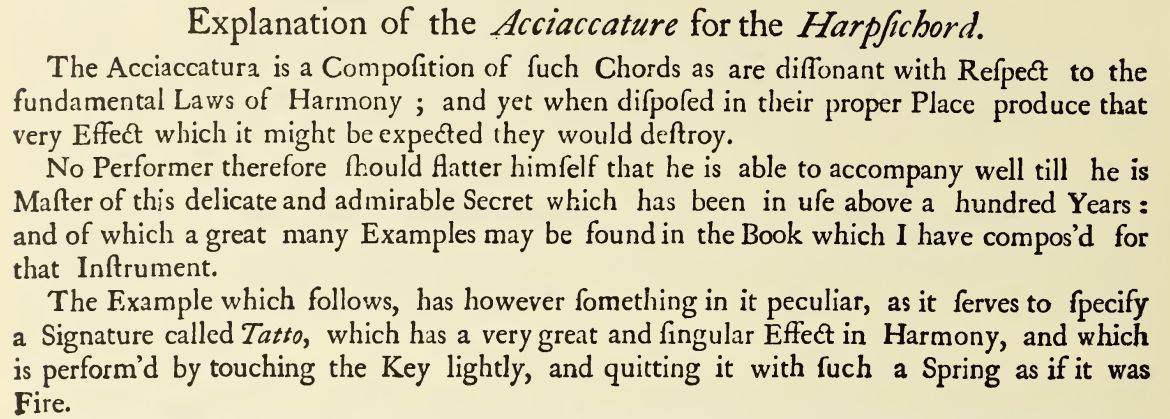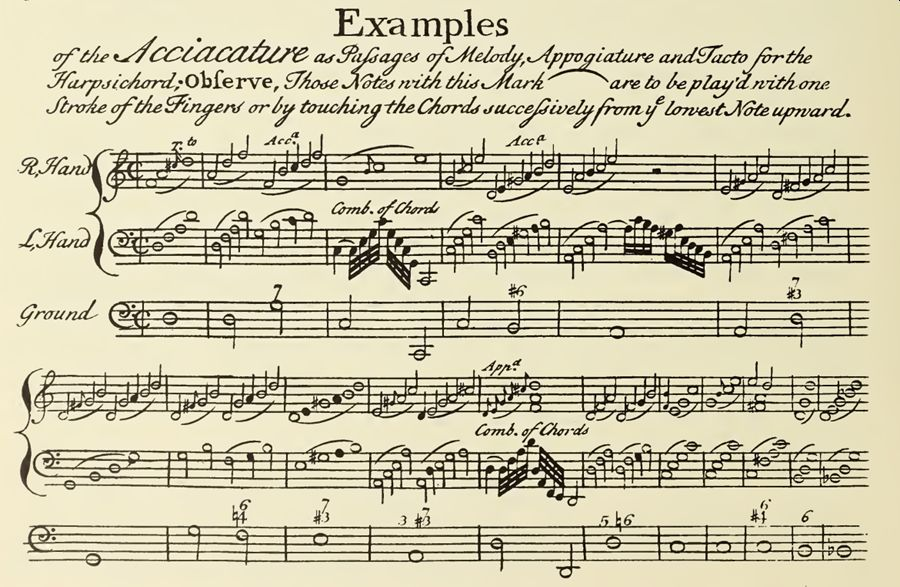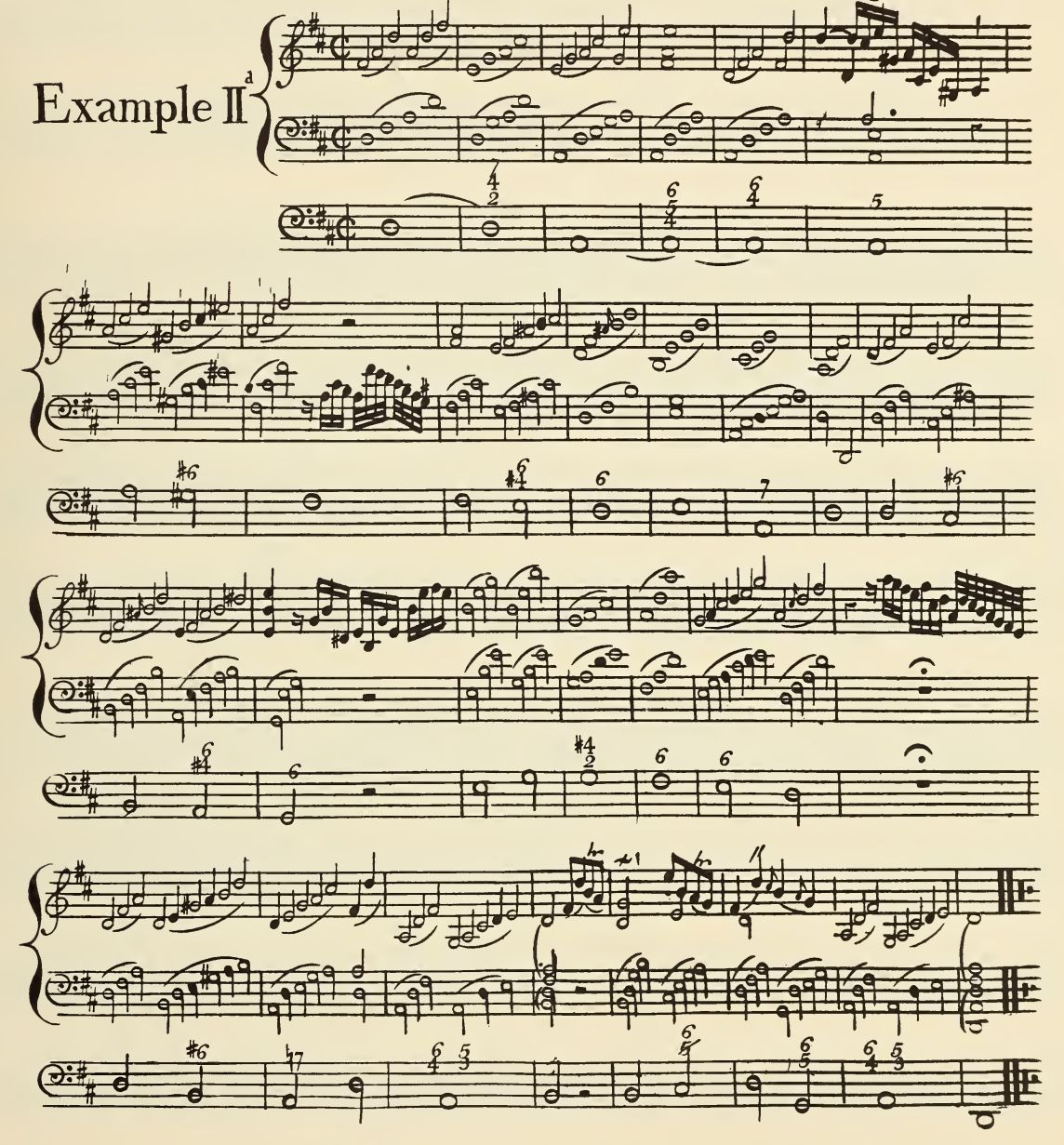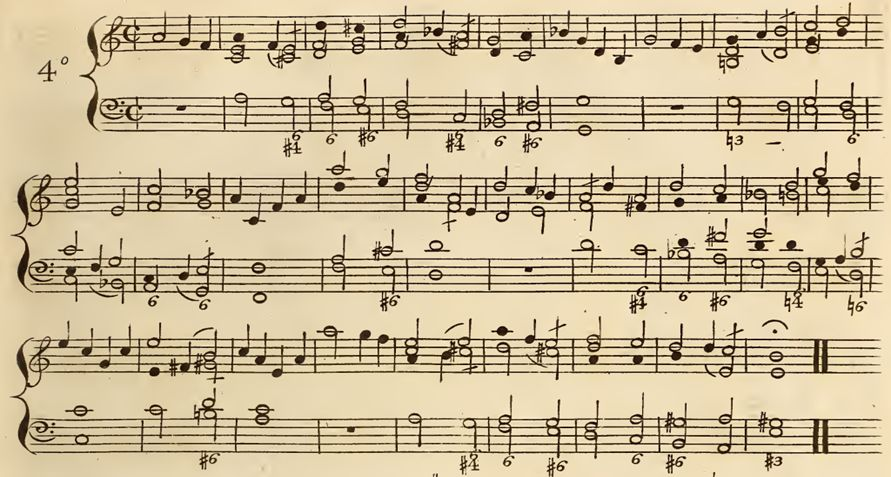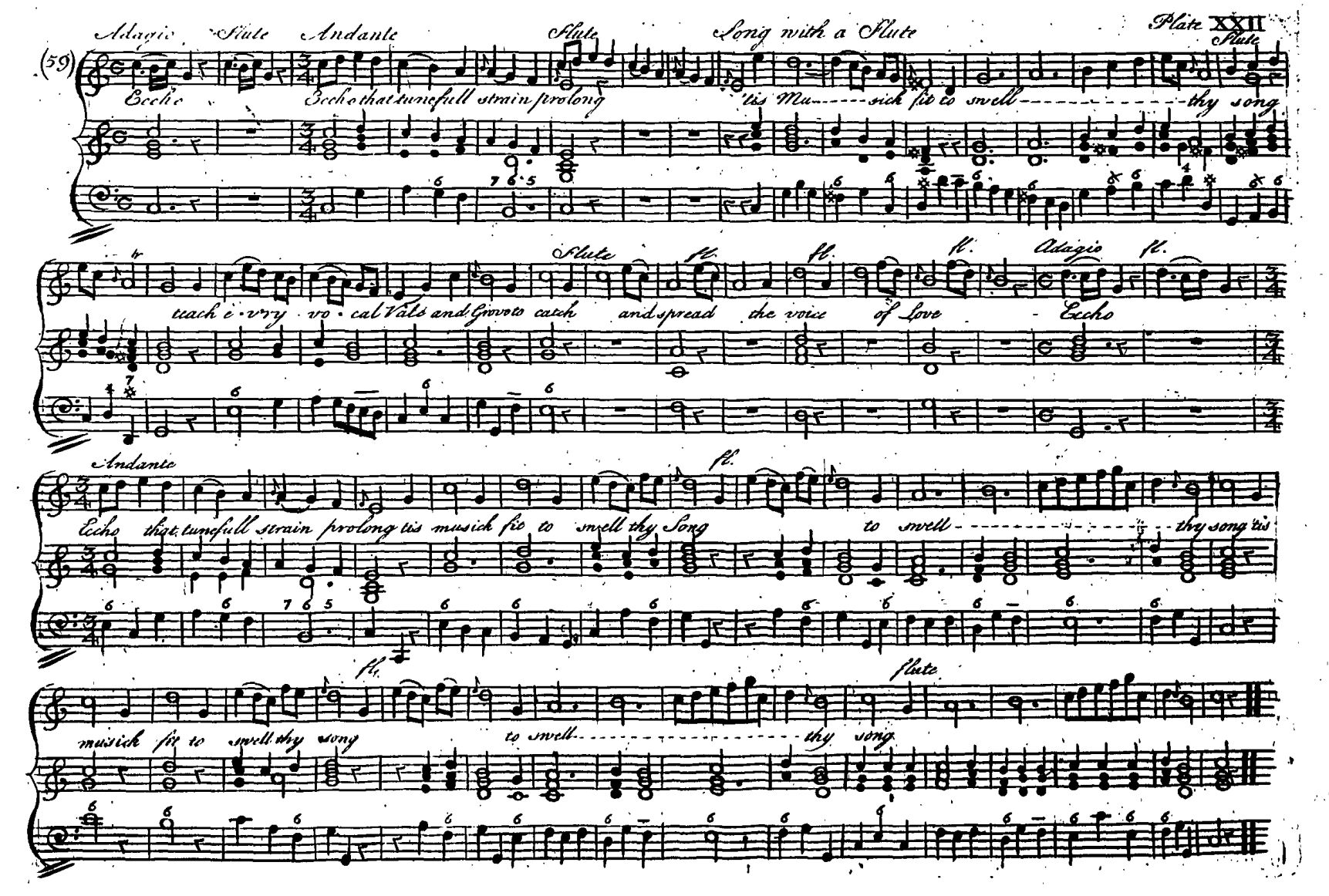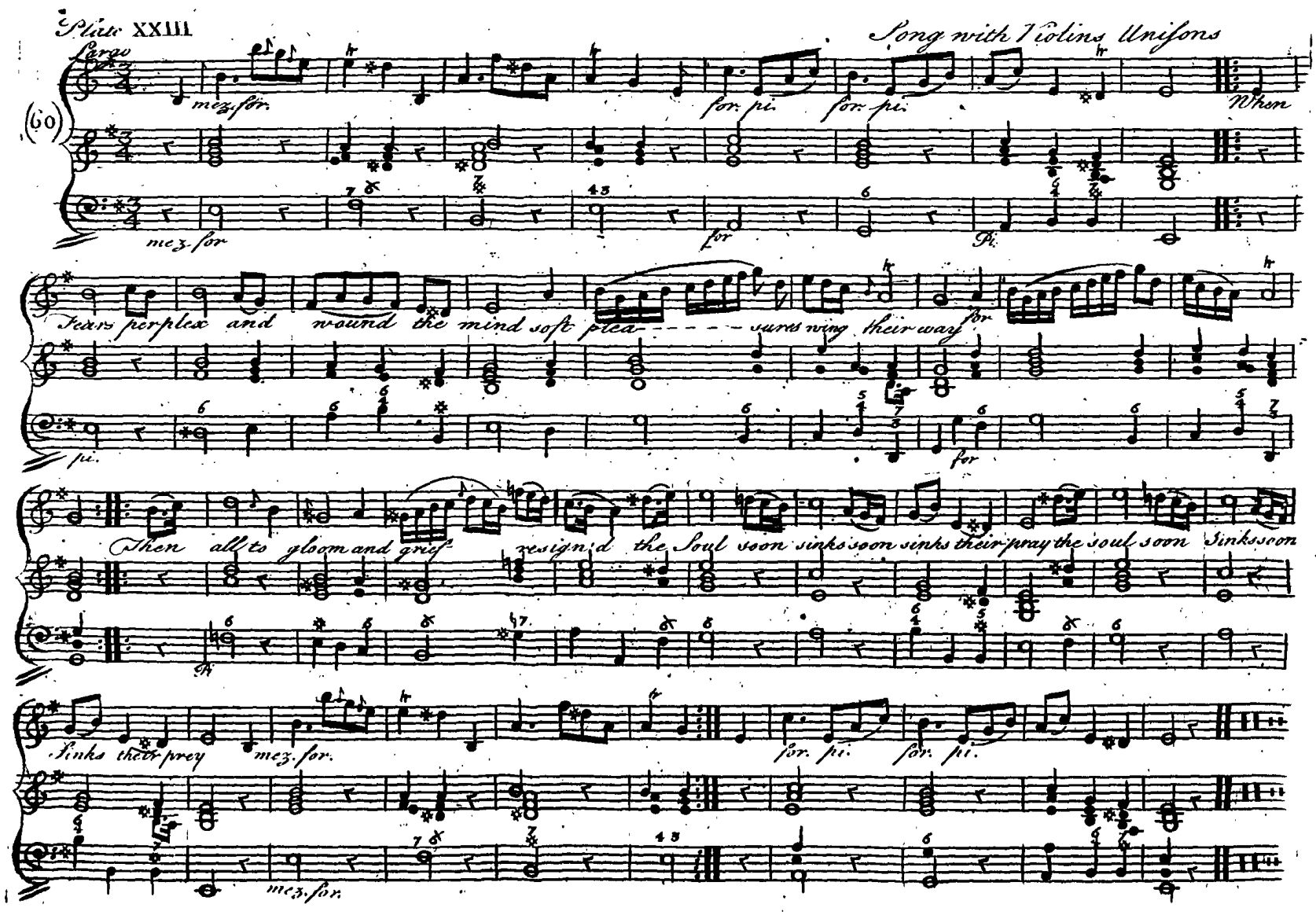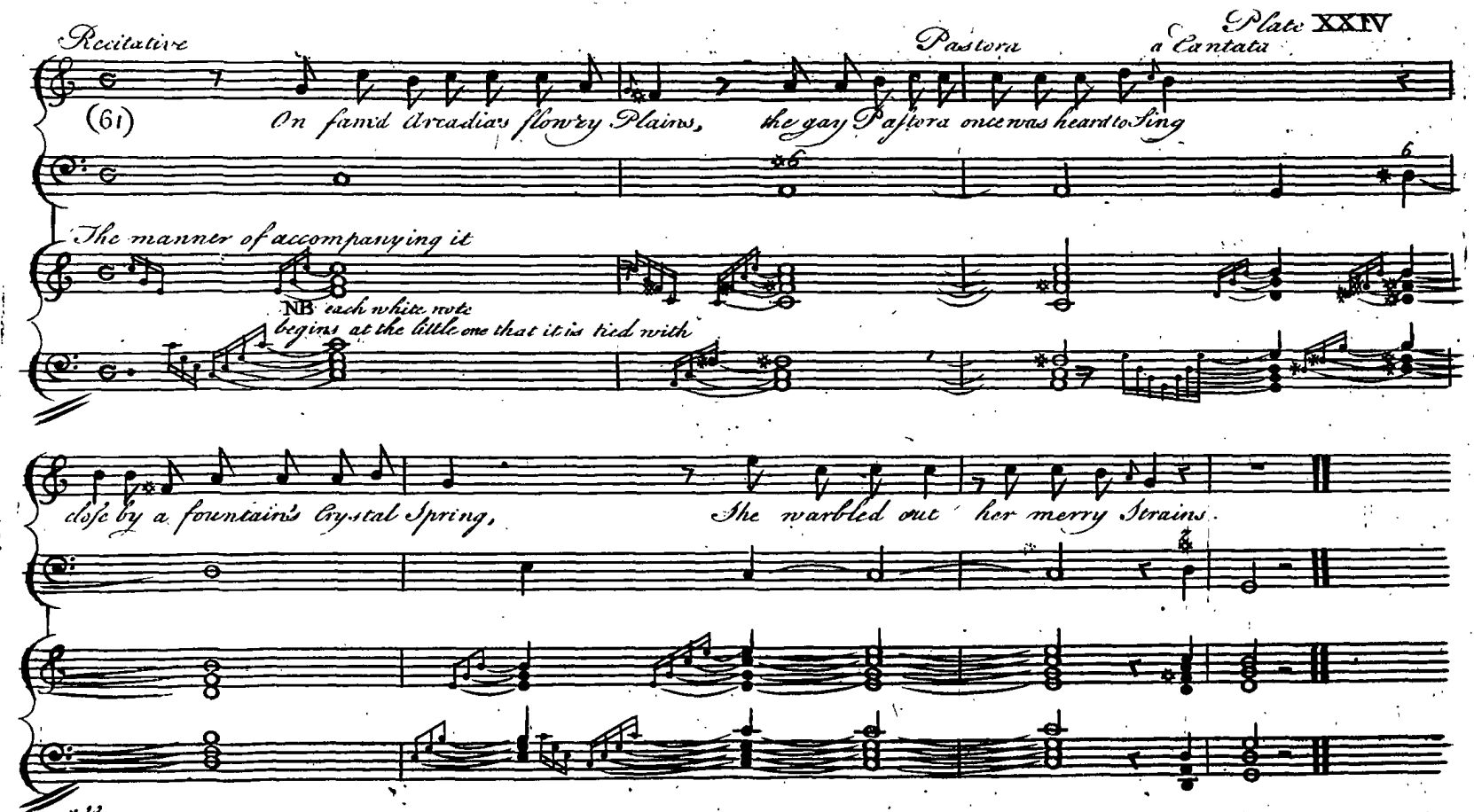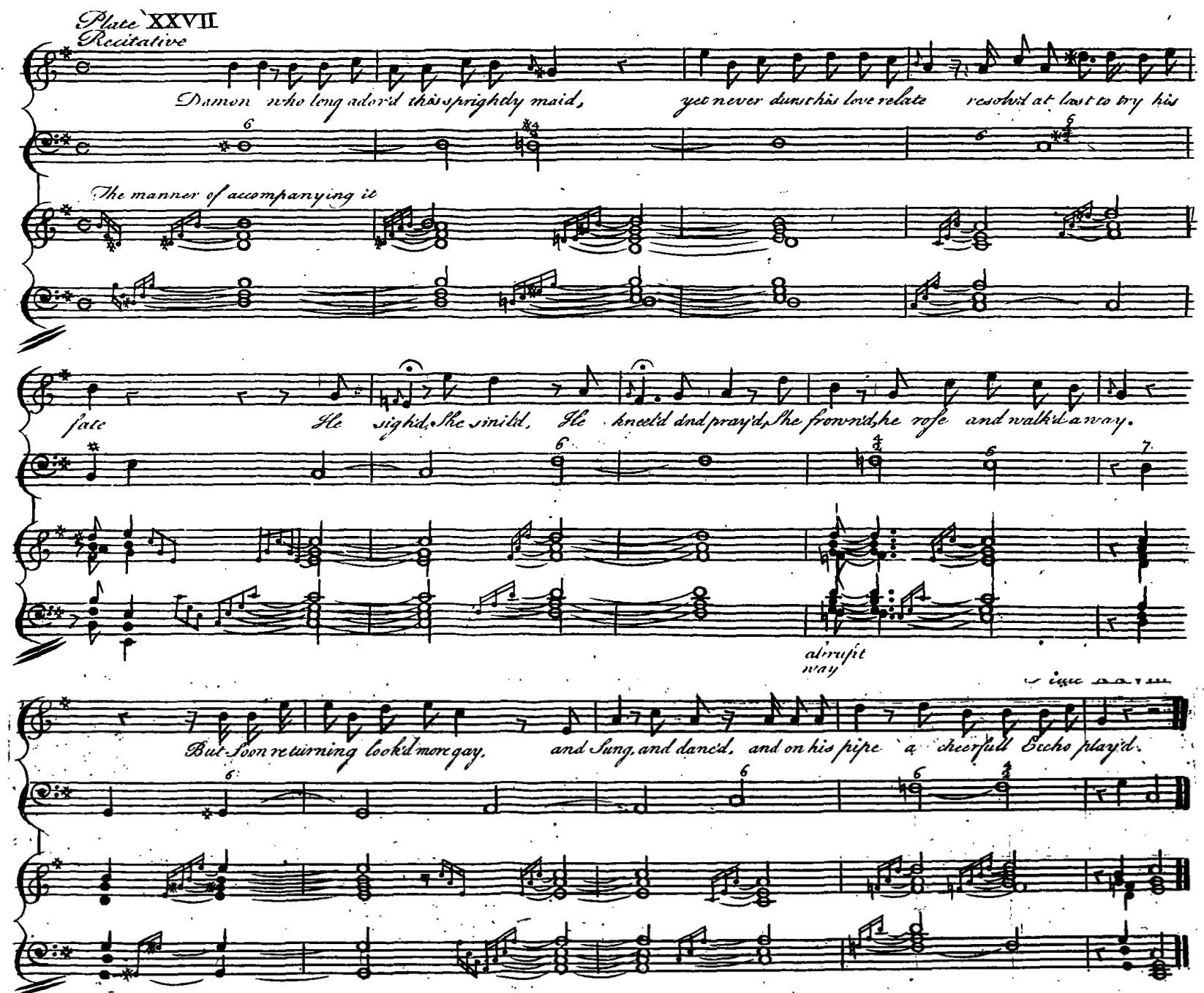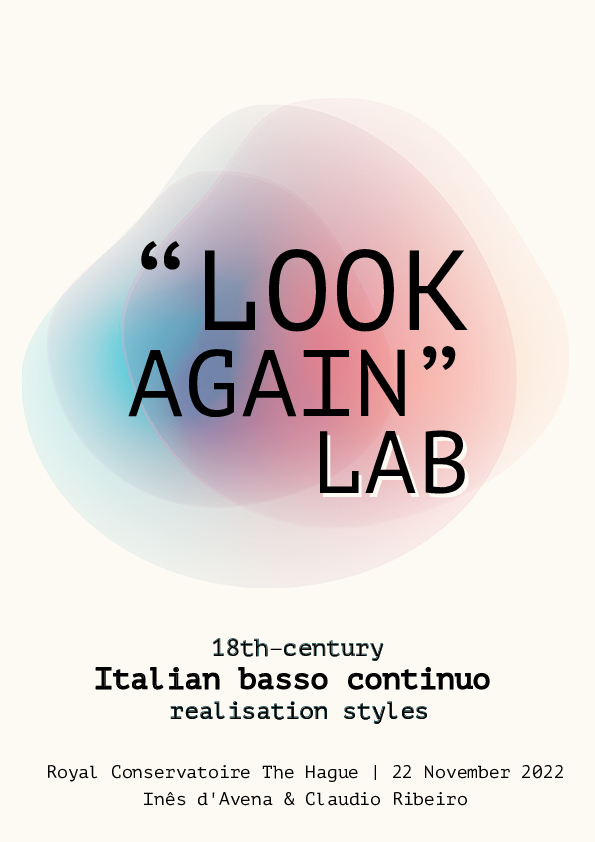Italian basso continuo realization styles
Although several sources provide rules and explanations on how to realize figured and unfigured basses, and many indications can be found in sections of pieces, there are very few fully written-out realizations from the Baroque period in Italy. Though other scholars and performers have previously dealt with all these sources in theory and in practice,1 by approaching the sources again ourselves we wanted to investigate the realizations' influence on the other voices of a composition, and how the application of these sources by harpsichordists might relate to and affect melody-instrumentalists and singers. In short, with this case study we wanted to explore the performative consequences of basing ourselves on these realizations for the performance practice of Italian music in this period.
1. SELECTED SOURCES1
ITALIAN SOURCES
Anonymous
Arietta “Son un certo spiritello” in Regole di canto figurato, contrappunto, d’accompagnare (c. 1670-90), I-Bc Ms. E. 25.2
Alessandro Scarlatti (1660-1725)
Cantata del Sig.re Aless. Scarlatti fatta per suo studio 1690, “Da sventura a sventura”, H.161, I-Nc Cantate 259 (1).3
Francesco Gasparini (1661-1727)
Cantate da camera a voce sola, op. 1 (Rome, 1695)
L'Armonico Pratico al Cimbalo (Venice, 1708).4
Antonio Tonelli (1686-1765)
Realizzazione del basso continuo dell’opera quinta di A. Corelli (before 1718), I-MOe Mus. F. 1174.5
Francesco Geminiani (1687-1762)
A Treatise of Good Taste in the Art of Musick (London, 1749)
The Art of Accompaniment, op. 11 (London, c. 1756)
Nicolo Pasquali (c. 1718-1757)
Thorough-bass made easy (Edinburgh, 1757)
OTHER SOURCES
Heinrich Nikolaus Gerber (1702–1775), corrected by J. S. Bach
Realization (1725) of T. Albinoni’s sonata op. 6 no. 6, D-B Mus.ms. 455.6
From the Italian sources above, only the Anonymous and Tonelli offer full realizations of complete works.7 The other sources offer plenty of examples though, so piecing all of this together we get a rather complete and varied picture of the different styles, applicable to instrumental and vocal repertoire.
Next, we present a short summary of what we gathered from each of the sources, as a means to form and refresh our 'vocabulary'.
(Click on images to enlarge.)
SUMMARY OF OBSERVATIONS REGARDING THESE SELECTED SOURCES
Anonymous
Regole di canto figurato, contrappunto, d’accompagnare (c. 1670-90), I-Bc Ms. E. 25
This manuscript comprises a music method focused on keyboard: scales, intervals, accidentals, counterpoint, accompaniment. It probably dates from the 2nd half of 17th century. Another copy of this work, bearing some differences (either a copy of Ms. E. 25 or another copy of a presumed original) is found in Rome (I-Rli Musica R.1) and probably dates from the middle of the 18th century.8
- Examples with full realization (chords for left and right hand) are given throughout the document;
- The author shows diminutions for the left hand (in the style of the 17th-century);
- Parallel octaves and fifths are implicitly allowed in the inner voices (p. 79)
- Regarding the accompaniment playing higher than the voice: “To accompany it with the higher 3rd is criticised because some do not want the singing part (which is in the soprano here) to be surpassed in range. Nevertheless, I leave the matter to the taste of the player.” (p. 139)
- “Nowadays it has become very usual to play as “full” as possible and with false notes [dissonances], simply trying to please the ears both with the fullness of the harmony and with the falseness [of such dissonances]. This way of playing, usually called “made of acciaccaturas” [d’acciaccature], is so nice and it pleases so very much the ear with the fullness of the harmony and the false notes […]” (p. 162)
- “Sometimes I put dissonances in between consonances, playing them and stopping them immediately: I call this a mordent [literally “biting”], like the little bite of a small animal that bites with its teeth and releases immediately. If anyone preferred to hold the dissonance instead of stopping it, it will depend on his judgement.” (p. 163)
The author provides a full realization for the Arietta "Son un certo spiritello" (pp. 164-173). In it, the notes of the original bass are sometimes repeated, making the rhythm more clear (see for example bars 1-4, example above), and providing extra rhythmic impulses.
We also observe that the author acompanies every note of the bass with full chords (6-7 notes for each chord, shared between both hands), except in the passages with 8th notes happening in the same harmony. In one instance (bar 33), these 8th notes are accompanied by thirds in the right hand.
There is a preference for closed chord position in the right hand but a less dense left hand, especially when it is low, having a fifth and not a third as the lowest interval in the chord, as we can see (here on the right) in bars 9 and 10:
This style of realization is also seen in Gasparini and Tonelli but not in Geminiani (to compare with the three authors mentioned here who regularly use chords for the left hand).
There are several mordents (i.e. not held but released after playing the chord) and acciaccature (held with the chord) throughout the piece, but very few passing notes between chords.
It is difficult to say whether this is a basso-continuo realization or an obbligato-keyboard accompaniment. It is also not clear what the word 'studio' refers to: was it meant for Scarlatti's own study, or for the study of basso continuo, of keyboard playing, of compositional style, or something else?
In order to try to understand whether the keyboard part could be regarded as a basso continuo realization, we first played it as is (on voice flute and harpsichord).9 We then repeated a few passages playing only the bass (or a bass drawn from what is written) and a simple continuo realization, mainly with only chords added to this bass (that is not, creating any counterpoint). At first, we missed all the movement of the other voices in the keyboard part and especially the imitations of the singing part. However, we realized that the 'simplified' piece then looked and sounded similar to what we are used to see and hear in vocal pieces by other composers of the period, such as Alessandro Stradella. This led us to consider that the keyboard part in question might indeed be a (type of) continuo realization, and could well be used in the performance of similar contemporary vocal pieces.
Francesco Gasparini
L'Armonico Pratico al Cimbalo (Venice, 1708)
No introduction is needed on the relevance of Gasparini's treatise, sufficing to say it was reprinted several times, into the first years of the 19th century. Gasparini's basic way of adding chords to the bass also includes extra notes for the left hand (pp. 22 & 24): “When the player is skilled he must endeavor to employ as many notes as possible in order to bring out greater harmony” (p. 23).
As in the Anonymous and in Tonelli below (but not in Geminani), there is a preference for closed chord position in the right hand but a less dense left hand, especially when it is low.
Contrary to what is often done and advised today, Gasparini doesn't consider it a problem to double the bass in a 6/3 chord, as long as there are no parallell fifths or octaves in the outer voices. The doubling of the bass in a 6/3 chord is also seen as a normal element of continuo realization by Tommaso Gaffi, in his Regole per Sonare su la parte.10
Gasparini writes about the use of the mordenti (short, released immediately after playing the note) and acciaccature (held for the duration of the chord). Although they are well discussed in the chapter about Recitatives, he says at the end that "you will be able to make equal use of the mordent and acciaccatura in arias or canzonas, since they are essential for playing with grace and good taste; through their use the accompaniment becomes much more harmonious and delightful." (p. 69)
Gasparini advises never to play note-by-note with the composed part (p. 104) and not to play parallel fifths and octaves in the outer voices, which can be avoided by using contrary motion: “With these reservations, the filling or doubling of the consonances as much as possible is not a thing to be avoided; nor does one pay such close attention to octaves and fifths in the inner parts, even when they move in parallel motion.” (p. 87)
On page 49 of the 1708 edition, Gasparini talks about an interesting exception when doubling consonances and dissonances with the left hand: “Sometimes doubling the fourth and sixth in the left hand produces a very good effect, but in the resolution one must not allow the major third to be heard. On the harpsichord, leaving the fourth to sound together with the fifth while resolving to the major third in the right hand produces a most pleasing harmony; it is a kind of acciaccatura, as many performers call it [...]. This, however, does not work well on the organ, except in full, thick texture.”
In his Cantate da camera a voce sola, op. 1, Gasparini printed out some of his suggestions for the basso continuo realization, both of which, according to him, should be used with discretion:
1) the addition of diminutions to the bass part (below: left image and right image from bar 4) - in those cases, he kept the simple bass as well "for convenience or ease of accompanying";
2) the use of embelished passages played by the right hand when the singing voice stops (below: right image, bars 2-3).
He mentions in the preface that these passages could also be useful for the archlute or cello.
Note that, in order to play "as many notes as possible in order to bring out greater harmony” in the passage from bar 5 on the image on the left, one might need to play higher than the singer or double the voice, a practice discouraged by Gasparini.
Antonio Tonelli (1686-1765)
Realizzazione del basso continuo dell’opera quinta di A. Corelli (before 1718), I-MOe Mus. F. 1174
Unlike Geminiani and Alessandro Scarlatti, Tonelli is not a well-known figure so it might be useful to offer some contextualization. He was born and died in Carpi, province of Modena, and worked (also as maestro di cappella) and traveled not only in the Emilia-Romagna region (Bologna, Parma, Reggio Emilia) but also abroad (Denmark).
Very few of his compositions survive, but he is somewhat known for his treatise (copied by Padre Martini) and for his (in)famous realization of the entire op. 5 by Corelli:
-
Trattato di musica in due parti diviso (MS, before 1760, Carpi, Archivio Storico, lascito Guaitoli, nos.111–14) [copy with changes in G.B. Martini’s hand, I-Bc L/54]
-
Realizzazione del basso continuo dell’opera quinta di A. Corelli, I-MOe Mus. F. 1174 (Biblioteca Estense Universitaria, Modena)
Though not dated, the manuscript of Tonelli’s realization of Corelli's op. 5 contains the ex-libris of the cartographer Vincenzo Coronelli, who died in 1718, providing us with a terminus ante quem for the dating of the manuscript.
Tonelli's realizations are mostly written with full chords, shared between both hands. He also observes the practice seen in Gasparini and the Anonymous of leaving more than a third between the bass and the second lowest note of the chord, especially when the bass is low.
However, the very full-chord realization for which Tonelli is known is not seen in the whole collection: sometimes, when the bass has 8th notes, it is accompanied by 3-4 extra notes, often in the beginning of a group of four notes and played by the right hand. Other times, Tonelli contrasts sections with full chords with sections with a much lighter texture, of 3-4 notes, in a fashion that reminds us of a concerto grosso texture and the contrasts between solo and tutti sections. This is the case, for example, in Sonata no. 2, fourth movement:
Tonelli quite often transposes (low) notes one octave higher, most probably to make it easier for the left hand to play extra notes, such as in the example below from Sonata no. 4, third movement. If the original low bass had been maintained, adding close consonances would not have been advised, as we saw in Gasparini.
When the violin has thematic entrances before the bass starts, Tonelli doubles these entrances literally with the right hand (a practice similar to that described by Geminiano Sangiovanni)11 and switches to chordal accompaniment once the bass enters.
In a sequence in the second movement of Sonata no. 4, Tonelli adds progressivelly more notes to the accompaniment on each of the three statements, possibly with the intention of making a crescendo:
Claudio:
-
Tonelli’s realization had fuller texture (Claudio’s realization had about 25% less notes);
-
Similarities: both added extra notes on empty beats, both had extra notes on the left hand (Claudio’s less often);
-
Tonelli had a good solution for Claudio’s wish to play fuller chords in the 3rd movement, bars 1-6;
-
In Tonelli's realization, the structure of the bar is always very clear, with the addition of notes or chords when the bass has rests or after the beginning of long notes.
Inês:
-
The fact that Tonelli uses the same rhythms as the violin part in several spots feels a little constraining.
-
It is interesting that in the Adagio (fourth movement) the fact that the bass is transposed an octave higher in the middle of bar 1 makes it sound as if another voice enters there. In the same movement, in the cadence, the realization is quite a bit higher than the violin part, resulting a different ‘higher’ voice for the cadence.
-
Because the realization is often quite high (often higher than the violin part), it feels like the violin part is one of the voices of the whole, rather than the solo, top part.
Some of these observations are similar to those of other authors already mentioned (such as the acciaccature and mordenti, called "tatto" or "tacto" by Geminiani); other observations by Geminiani demonstrate a different practice, as the instruction not to double the bass when this has a leading note (the "accidental Sharp Third" above). Particularly interesting is his advice to play in an arpeggiated manner in order to prolong the sound of the harpsichord.
Niccolo Pasquali (c. 1718-1757)
Thorough-bass made easy (Edinburgh, 1757)
Like Tonelli, Pasquali probably deserves a short introduction. He was born in Cosenza, moved to London in 1743 (according to Burney), and 1752 to Edinburgh, where he died 5 years later. Most of his music is lost, but his thorough-bass treatise received some degree of notoriety - it was published a few times in English, and translated into French and Dutch. His other treatise, The Art of Fingering the Harpsichord, was published posthumously in 1760 in London.
After a number of basic rules and progressive exercises, Pasquali provides the realizations for a few short pieces (below pp. 49-51, 54). Unlike all of the previous authors, Pasquali shows realizations with chords strictly for the right hand only. A different style, personal preference or influence from his surroundings?
In the Recitative example, Pasquili advises the use of arpeggios, as do Gasparini and Sangiovanni.
One particularity, which perhaps corroborates Tonelli in the crescendo created by the realization in the above-mentioned progression (Sonata no. 4, II) is the change in texture clearly connected to the dynamic result in the accompaniment, such as in these examples (Plate XXI):
2. KC WORKSHOP NOVEMBER 22, 2022
To extend the experimentation with these sources to the KC community, we organized another 'Look Again Lab' on 18th-century Italian basso continuo realisation styles. All KC Early Music students (and interested teachers) were welcome to join. Fourteen (student) participants signed-up: 4 harpsichords, 3 traversos, 1 violin, 1 bassoon, 1 cello, 1 double bass, 1 mezzo-soprano, 1 fortepiano/harpsichord and 1 cello with harpsichord as secondary study; there were two 'no-show'.
During the two hours and 45 minutes we had, we briefly presented the sources above, invited students to play the realizations of the Arietta by the Anonymous author and of Tonelli for Corelli's Sonata op. 5 no. 2 (and Claudio played the Scarlatti cantata), we discussed their impressions, and lastly they were invited to apply what we had worked on on other Italian works from the first half of the 18th century.
Workshop structure
- a harpsichordist read the realization on the Italian harpsichord (1/6 comma meantone), together with another instrumentalist or singer
- both players were asked what their impressions of the realizations were
- the group identified interesting or unusual traits in the realization
- the same duo then played the same realization on the Flemish harpsichord (Werckmeister III); the group drew comparisons
- another realization was played by another duo on the Italian harpsichord etc.
- lastly, three (spontaneous) duos were asked to play an Italian movement they had brought, with the harpsichordist realizing the continuo using the traits that had been identifyied and discussed earlier
Some reflections after the workshop
- Having the chance to observe others experimenting with these sources for realization with a variety of repertoires helped us better understand the sources (for example, why Tonelli often transposes the bass one octave higher) and the practical relationship between these historical realizations and the melodic parts they complement.
- Everyone who played with these realizations on the Italian harpsichord felt supported by the full style of accompaniment. The only singer present preferred a thinner style, which suited better the character suggested by the text the piece.
- Having an appropriate instrument and temperament (an Italian harpsichord tuned in 1/6 comma meanton vs. a Flemish harpsichord tuned in Werckmeister III) makes an enormous difference in understanding a more likely soundscape for these sources.
3. OUR OWN WORK: TONELLI & CORELLI
Having studied the sources above, and benefitting from the impressions of the students, we then approached the realization of Tonelli again with the following objectives:
- practice them enough so that no techinical issue would influence our understanding of their feasibility
- find particular traits in his realization style
- observe the interaction between the 'solo' voice and Tonelli's realization
- understand what changes in our playing by using his realization
- and finally, embody these findings to be able to apply them in other repertoire
Some reflections after our experimentation with Tonelli's realizations
Tonelli’s style of realization is often close to the concept of a ‘basso seguente’, drawn up from the lowest sounding voice of a composition at any given moment, entailing that imitative entrances would always be doubled. Tonelli often doubles the top line in the realization (something also seen in the Anonymous realization), most often creating a basso continuo which actually contains the full composition, even without the violin part. It is a practice that is not encouraged by others, such as Gasparini for example, but which can present interesting results. At the workshop on November 22, one of the students pointed out that Tonelli’s realization sounded like “a harpsichord piece with a little bit of violin”. This can be seen as positive or negative; on the positive side, it can be very freeing for an instrumentalist playing with continuo to think of the work as being fully realized already by the continuo, leaving a lot more space for, for instance, ornamentation to happen within a different perspective.
